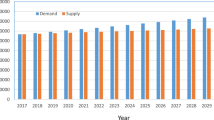Abstract
BACKGROUND: Retainer practices represent a new model of care whereby physicians charge an up-front fee for services that may not be covered by health insurance. The characteristics of these practices are largely unknown.
DESIGN, SETTING, AND PARTICIPANTS: We conducted a cross-sectional mail survey of 144 retainer physicians (58% response rate) and a national random sample of 463 nonretainer physicians (50% response rate) to compare retainer and nonretainer practices. Outcomes of interest included physician demographics, size and case-mix of patient panel, services offered and, for retainer practices, characteristics of practice development.
RESULTS: Retainer physicians have much smaller patient panels (mean 898 vs 2303 patients, P<.0001) than their nonretainer counterparts, and care for fewer African-American (mean 7% vs 16%, P<.002), Hispanic (4% vs 14%, P<.001), or Medicaid (5% vs 15%, P<.001) patients. Physicians in retainer practices are more likely to offer accompanied specialist visits (30% vs 1%), house calls (63% vs 26%), 24-hour direct physician access (91% vs 40%), and several other services (all P values <.05). Most retainer physicians (85%) converted from nonretainer practices but kept few of their former patients (mean 12%). Most retainer physicians (84%) provide charity care and many continue to see some patients (mean 17%) who do not pay retainer fees.
CONCLUSIONS: Despite differences between retainer and nonretainer practices, there is also substantial overlap in services provided. These findings, in conjunction with the scope of patient discontinuity when physicians transition to retainer practice, suggest that ethical and legal debates about the standing of these practices will endure.
Similar content being viewed by others
References
Carey B. A visit with Dr. Delux: red-carpet treatment can be had for a price, but is “boutique” worth it? Los Angeles Times. July 22, 2002.
Retainer practices. Report of the council on ethical and judicial affairs. American Medical Association. 2004; Report 3-A-03.
Brennan TA. Luxury primary care—market innovation or threat to access. N Engl J Med. 2002;346:165–8.
American Society of Concierge Physicians. Available at: http://www.concierg.physicians.org. Accessed September 27, 2004.
Donohue M. Luxury primary care, academic medical centers, and the erosion of science and professional ethics. J Gen Intern Med. 2004;19:90–4.
Reinhardt UE. The emergence of “boutique medicine.” BMJ. 2003;327:129E.
Alert warns of Medicare conflict for concierge practices. American Medical News. April 19, 2004:1, 2.
Boutique care goes mainstream. American Medical News. August 4, 2003:26, 27.
GAO: Boutique hospitals treat healthier patients. American Medical News. July 16, 2003:10, 12.
Institute of Medicine. Unequal Treatment: Confronting Racial and Ethnic Disparities in Health Care. Washington, DC: National Academy Press; 2003.
Sandy LG, Schroeder SA. Primary care in a new era: disillusion and dissolution? Ann Intern Med. 2003;138:262–7.
Reinhardt UE. Future trends in the economics of medical care. Am J Cardiol. 1985;56:50c-9c.
Japsen B. Doctors on Retainer: Less Waiting, Less Fairness? Chicago Tribune. October 5, 2003.
Flocke SA, Stange KC, Zyzanski SJ. The impact of insurance type and forced discontinuity on the delivery of primary care. J Fam Prac. 1997;45:129–35.
Asch DA, Jedrziewski MK, Christakis NA. Response rates to mail surveys published in medical journals. J Clin Epidemiol. 1997;50:1129–36.
Adams D. Conn. ob-gyn group delivers surcharge to offset liability pain. American Medical News. June 14, 2004:1, 2.
Japsen B. Doctors give extra fees a shot. Chicago Tribune. September 16, 2003;section 3, 1, 4.
Mays G, Claxton G, Strunk B. Tiered provider networks: patients face cost-choice trade-offs. Issue Brief #71. Center for Studying Health Systems Change. November 2003.
Author information
Authors and Affiliations
Corresponding author
Additional information
The authors have no conflicts to declare.
See editorial by Troyen Breennan, p. 1190
This research was supported by the Institute for Ethics at the American Medical Association, the Robert Wood Johnson Clinical Scholars Program, and the MacLean Center for Clinical Medical Ethics. The funding sources had no role in the collection of the data, analysis, interpretation, or reporting of the data or in the decision to submit the manuscript for publication. This research was presented at the Society for General Internal Medicine Annual Meeting, Chicago, IL, May 2004, and New Orleans, LA, May 2005.
Rights and permissions
About this article
Cite this article
Alexander, G.C., Kurlander, J. & Wynia, M.K. Physicians in retainer (“Concierge”) practice. J GEN INTERN MED 20, 1079–1083 (2005). https://doi.org/10.1111/j.1525-1497.2005.0233.x
Received:
Revised:
Accepted:
Issue Date:
DOI: https://doi.org/10.1111/j.1525-1497.2005.0233.x




